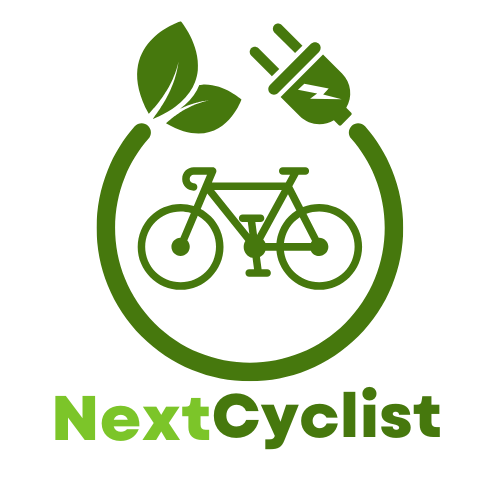Frustrated by your eBike battery taking forever to charge? You’re definitely not alone. Many riders face this common issue, and understanding why it happens is crucial for keeping your ride in top shape. Nobody wants to spend hours waiting for their battery to juice up when they could be out enjoying the open road.
In this article, we'll explore the reasons behind slow charging times. From choosing the right charger to maintaining your battery's health, we’ll cover practical tips that can make a real difference. So, if you've ever wondered what’s slowing you down, you’re in the right place.
Whether you're just getting into the world of electric bikes or have been riding for a while, this guide is designed for you. By the end, you’ll have the know-how to optimize your eBike's battery performance and get back to focusing on what truly matters: the ride ahead. Ready to get started? Let’s jump in!
TL;DR
- Slow eBike charging can stem from using a low-quality charger, battery aging, or temperature issues.
- Upgrade to a manufacturer-recommended charger for better efficiency.
- Monitor battery performance; aging can reduce charging speed over time.
- Optimal charging temperature is 20°C to 25°C (68°F to 77°F) for best results.
- For faster charging, choose a charger compatible with your battery's voltage and a higher amperage (2-5A).
- Maintain your battery by charging at room temperature, avoiding complete drainage, and cleaning contacts regularly.
- Store your battery at 50% charge if not in use for an extended period.
Common Reasons for Slow eBike Charging
If you've noticed that your ebike battery takes a long time to charge, you're not alone. Several factors can affect charging speed, and understanding these can help you get back on the road more quickly. Let’s explore some common reasons for slow e bike charging.
-
Using a low-quality charger can extend charging time. Cheap chargers might not provide the right voltage or current, which means your ebike won’t charge as efficiently. If your charger looks worn out or is from a generic brand, consider upgrading to a manufacturer-recommended charger, which usually offers better performance.
-
Batteries may age over time, which reduces their charging efficiency. Just like any battery, the performance of your ebike battery will decline as it ages. After a few hundred charge cycles, you may notice it takes longer to charge. Keep an eye on its performance, and if charging times continue to increase significantly, it might be time to look into a replacement.
-
Battery temperature affects charging speed; cold or hot batteries charge slower. Ideally, the best charging temperature for an ebike battery is between 20°C to 25°C (68°F to 77°F). If you're charging in colder conditions, the battery might take longer to reach full charge. Consider bringing your battery indoors to warm up before charging, especially during winter months.
By addressing these common issues, you can optimize your ebike's charging efficiency. For a deeper look into your battery's performance, check out our e-bike battery calculator to help you plan your rides better.
| Reason | Impact on Charging Time | Action Items |
|---|---|---|
| Low-quality charger | Slower charging | Upgrade to a manufacturer-recommended charger |
| Aging battery | Reduced efficiency | Monitor charging times, consider replacement |
| Extreme temperatures | Significantly longer charging | Charge at room temperature |
Choosing the Right Charger for Your eBike
When dealing with eBike battery charging issues, selecting the right charger can significantly impact your experience. A compatible charger not only speeds up charging times but also maximizes battery life. Let’s break down some essential tips to help you choose wisely.
Select a charger compatible with your battery's voltage.
It's crucial to ensure that the charger matches your eBike battery's voltage. Most eBike batteries come in either 36V or 48V configurations. Using a charger with the wrong voltage can damage your battery. Always check the specifications on both the charger and the battery. If you see a mismatch, it's best to look for a charger that aligns with your battery’s requirements.
A higher amperage charger can reduce charging time.
While matching voltage is essential, the amperage of the charger also plays a significant role. Generally, a higher amperage charger—say 2A instead of 1A—can charge your eBike battery more quickly. However, be cautious: too high of an amperage may risk overheating or damaging the battery. For most users, a charger with an amperage between 2-5A is a good balance to ensure fast charging without compromising battery health.
Consider using a smart charger that protects the battery.
Smart chargers come equipped with technology to monitor the charging process, automatically switching to maintenance mode once the battery is full. This feature not only protects your battery from overcharging but can also extend its lifespan. Investing in a smart charger can be especially beneficial if you plan on leaving your eBike plugged in for longer periods.
Here’s a quick comparison table to summarize your charger options:
| Charger Type | Voltage Compatibility | Amperage | Protection Features |
|---|---|---|---|
| Standard Charger | Matches battery voltage | 1A-2A | None |
| High Amperage Charger | Matches battery voltage | 2A-5A | Minimal |
| Smart Charger | Matches battery voltage | 1A-5A | Overcharge protection |
Choosing the right charger for your eBike helps you save time and increases the longevity of your battery. By following these guidelines, you can ensure your rides are smooth and worry-free. Happy charging!
Best Practices for Battery Maintenance
Taking care of your ebike battery is crucial if you want to extend its lifespan and ensure optimal performance. Proper maintenance can save you cash down the road, keeping your rides smooth and enjoyable. Here are some best practices to keep in mind:
-
Charge your battery at room temperature for optimal performance. Extreme temperatures can affect charging efficiency. Ideally, make sure your battery charges in a cozy environment, about 20–25°C (68–77°F). It’ll help maintain overall battery health.
-
Avoid completely draining the battery before recharging. Lithium-ion batteries (which most ebikes use) work best when kept above a certain charge level. In most cases, try to recharge your battery when it hits around 20% capacity. This practice not only preserves battery life but also ensures you have enough power for those unexpected rides.
-
Regularly clean battery contacts to ensure a good connection. Dirty or corroded contacts can interfere with charging and battery performance. Grab a soft cloth or a cotton swab and gently clean the connectors once every couple of weeks. This small effort can prevent annoying charging issues.
Following these simple steps will help keep your ebike battery performing at its best. Regular maintenance is key, so don’t skip on this! Your ebike will thank you with longer rides and fewer headaches.
Quick Maintenance Checklist:
| Task | Frequency |
|---|---|
| Charge at room temperature | Every charge |
| Recharge at 20% capacity | Every ride |
| Clean battery contacts | Every couple of weeks |
By sticking to this maintenance plan, you’ll not only enhance your battery’s longevity but also enjoy every ride your ebike has to offer!
Understanding Battery Capacity and Its Impact
When you’re dealing with your eBike, you might wonder why the battery takes longer to charge sometimes. The secret lies in understanding the capacity of the battery and how it influences the charging time.
Bigger capacity batteries take longer to charge
It’s pretty straightforward: the larger the battery’s capacity, the longer it takes to charge. A high-capacity battery (like a 500Wh bike battery) can provide more power and a longer range, but this also means it requires more time to fill up fully. Typically, a smaller battery (like 250Wh) can charge in a few hours, while a larger one might take 6-8 hours. If you're in a hurry, it’s good to consider having a second, smaller battery for quick rides.
Check your battery's state of charge (SOC) frequently
Keeping an eye on your battery's state of charge (SOC) can help you avoid unexpected downtime. Regularly checking the SOC will let you know when it's time to recharge. Consider checking it before each ride, so you’re not caught off guard. Many eBikes have built-in indicators that show how much charge is left. If your battery dips too low too often, it can affect its lifespan.
Aim to store your eBike battery at 50% for longer life
If you want your eBike battery to last longer, aim to store it at around 50% charge. Storing it completely dead or fully charged can wear it down more quickly. So, if you plan on not using your eBike for a while, charge it to about half. This tactic helps maintain battery health over time, ensuring that when you’re ready to ride again, your battery is in good shape.
Here’s a simple comparison of battery capacities and their expected charging times for clarity:
| Battery Capacity (Wh) | Approx. Charging Time |
|---|---|
| 250 | 2-3 hours |
| 500 | 6-8 hours |
| 750 | 8-10 hours |
Understanding these tips will help you get the most out of your eBike battery. Happy riding!
Troubleshooting Slow Charging Issues
If your ebike battery is taking longer than usual to charge, it can be frustrating. The good news is that you can often resolve these issues with a few simple troubleshooting steps. Let’s dive into what you can do to get your battery charging properly again.
First, start by inspecting the charging cable. Look for any signs of damage or wear. If the cable is frayed or kinked, it might not be delivering power effectively. It’s a good idea to test with another cable if you have one handy, just to rule out the cable as the culprit.
Next, check for loose connections between the battery and charger. Unplug the charger and reconnect it securely to ensure a tight connection. Sometimes, just a slight wiggle might create a gap that stops the flow of power, leading to slower charging times.
If you've performed these checks and the problems persist, you may need to consult a professional technician. It might be a sign of a deeper issue with the battery or electronics. Getting a professional opinion could save you from potential headaches down the line and ensure safety.
Quick Checklist for Troubleshooting Slow Charging:
- Inspect the charging cable for damage or wear.
- Check connections between the battery and charger for looseness.
- Consult a professional if problems persist.
By following these steps, you'll be better equipped to identify why your ebike battery is taking longer to charge. Regular maintenance and timely troubleshooting can help you keep your ride running smoothly and efficiently, letting you enjoy the journey without interruption.
To wrap up, if you've been wondering, why does my eBike battery take so long to charge?, you're definitely not alone, and understanding the reasons behind it is crucial. From choosing the right charger to maintaining optimal battery health, keeping your eBike's battery in top shape is key to enjoying those rides. Remember the importance of charging at the right temperature and using quality chargers—these simple changes can make a huge difference.
So, what’s next? Don’t let slow charging times hold you back! Dive into our other guides to explore more tips and tricks for your eBike. Feel free to subscribe for updates or contact us with any questions you might have. Your eBike deserves the best care, and with a little effort, you can keep it running smoothly. Get out there and ride!

